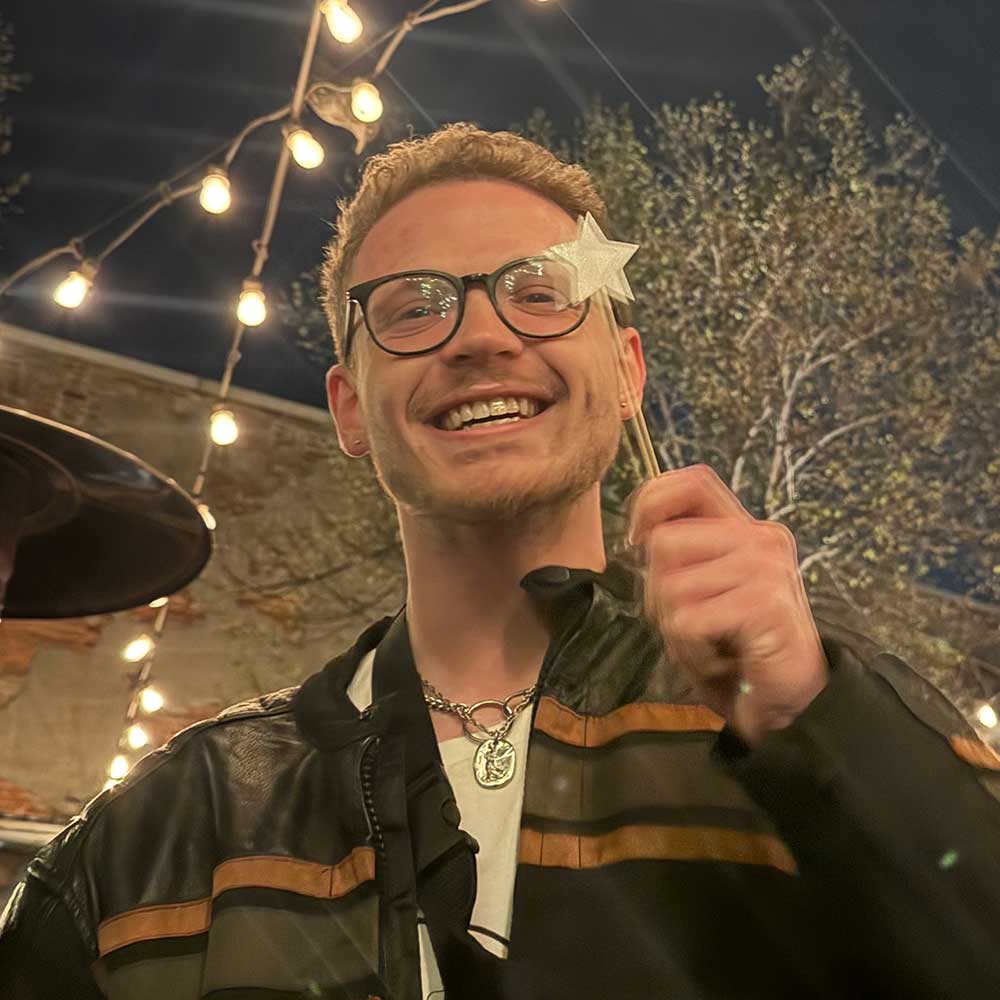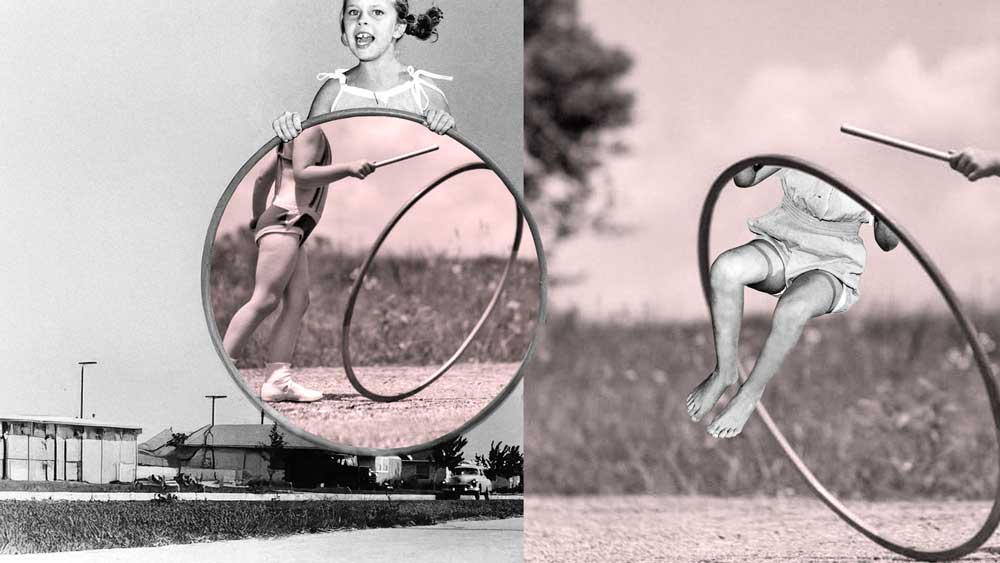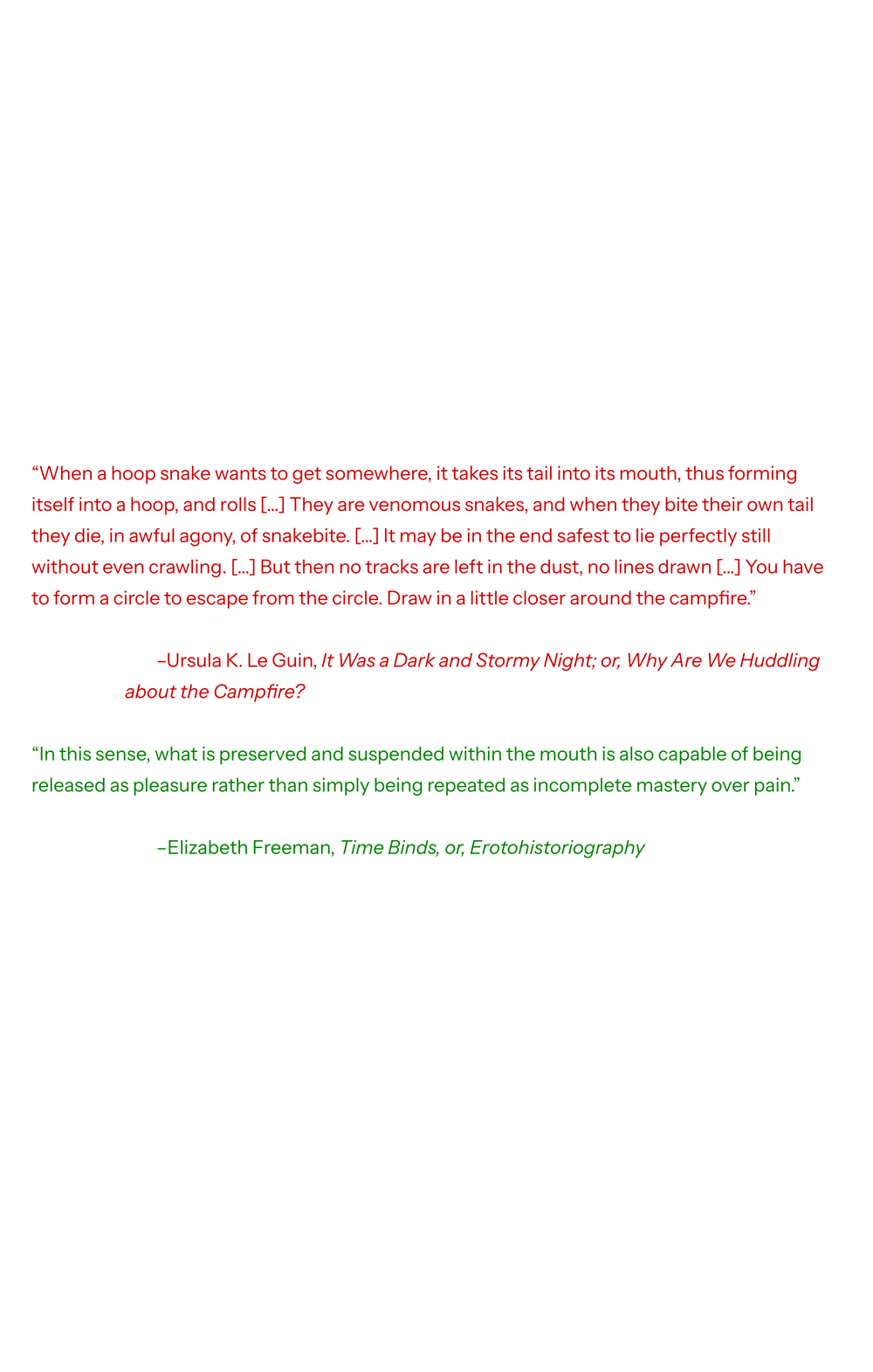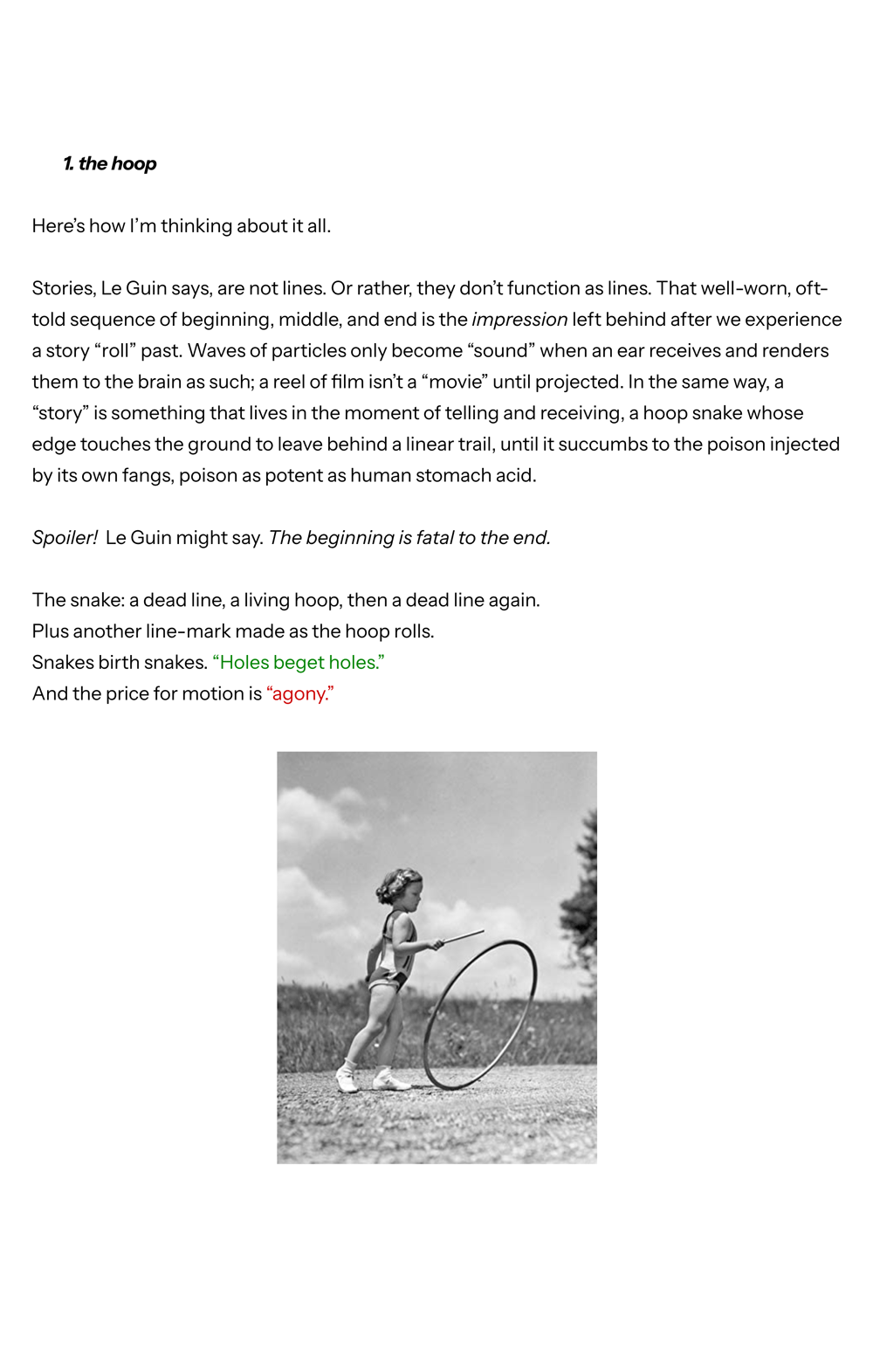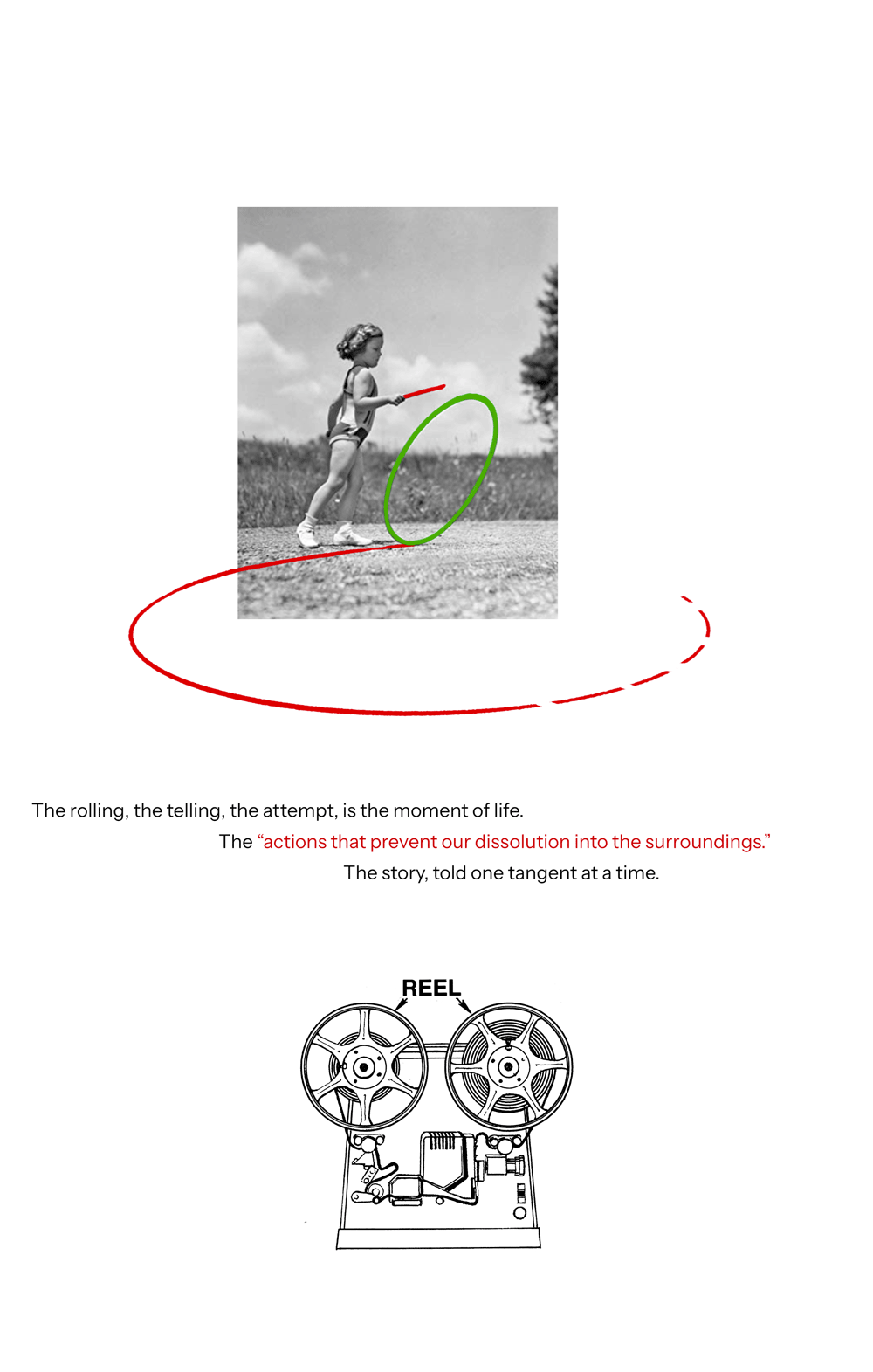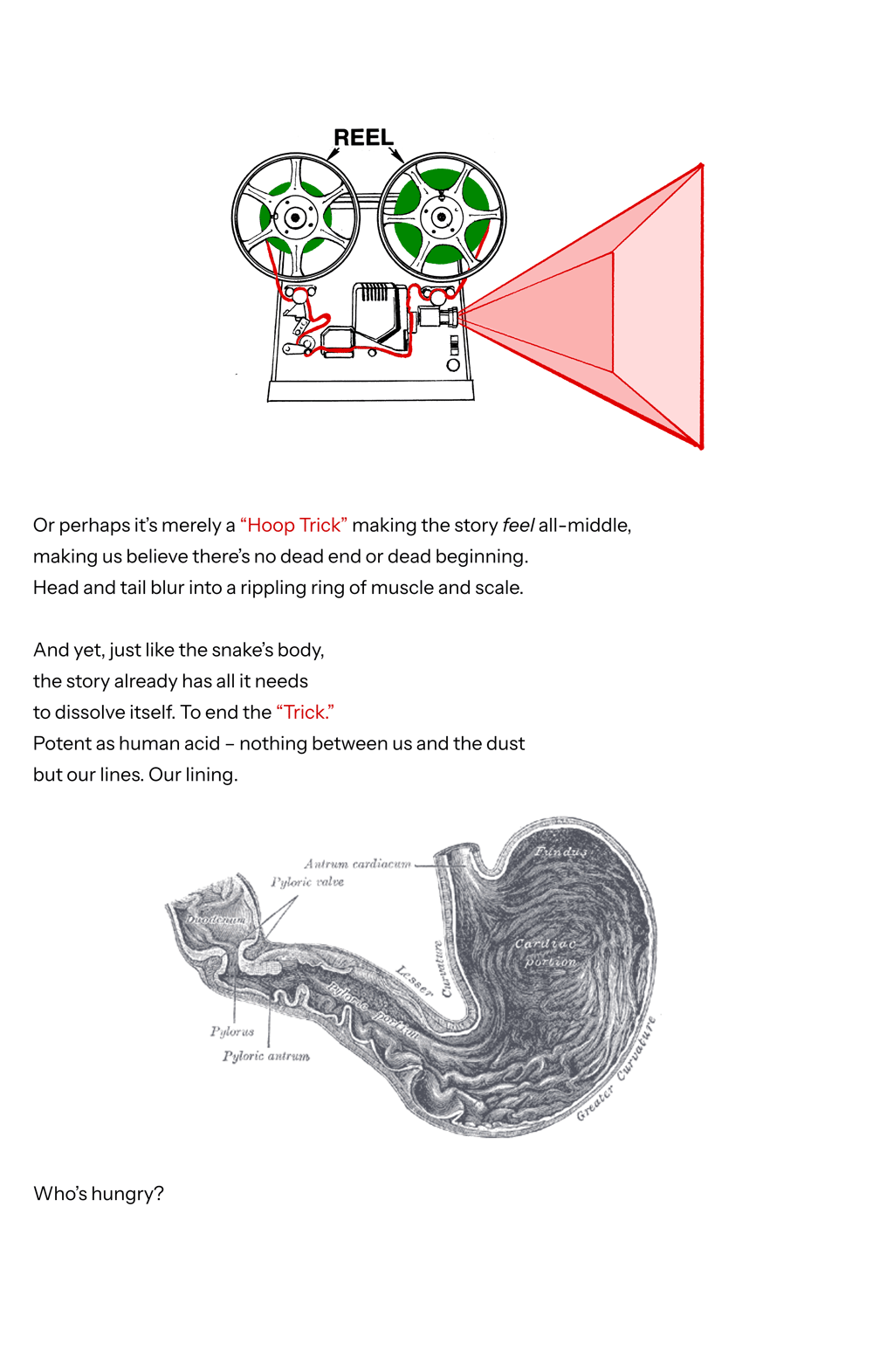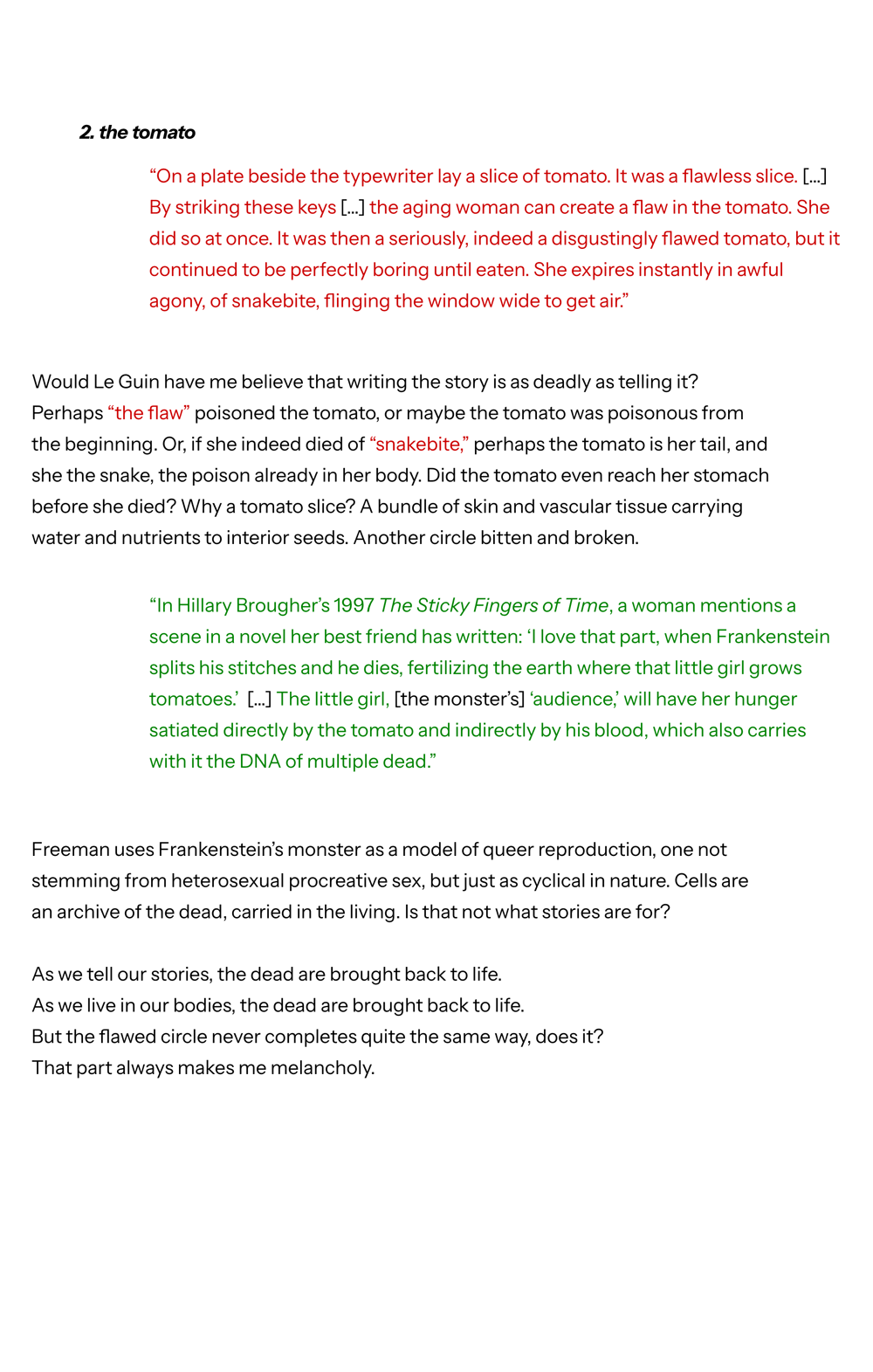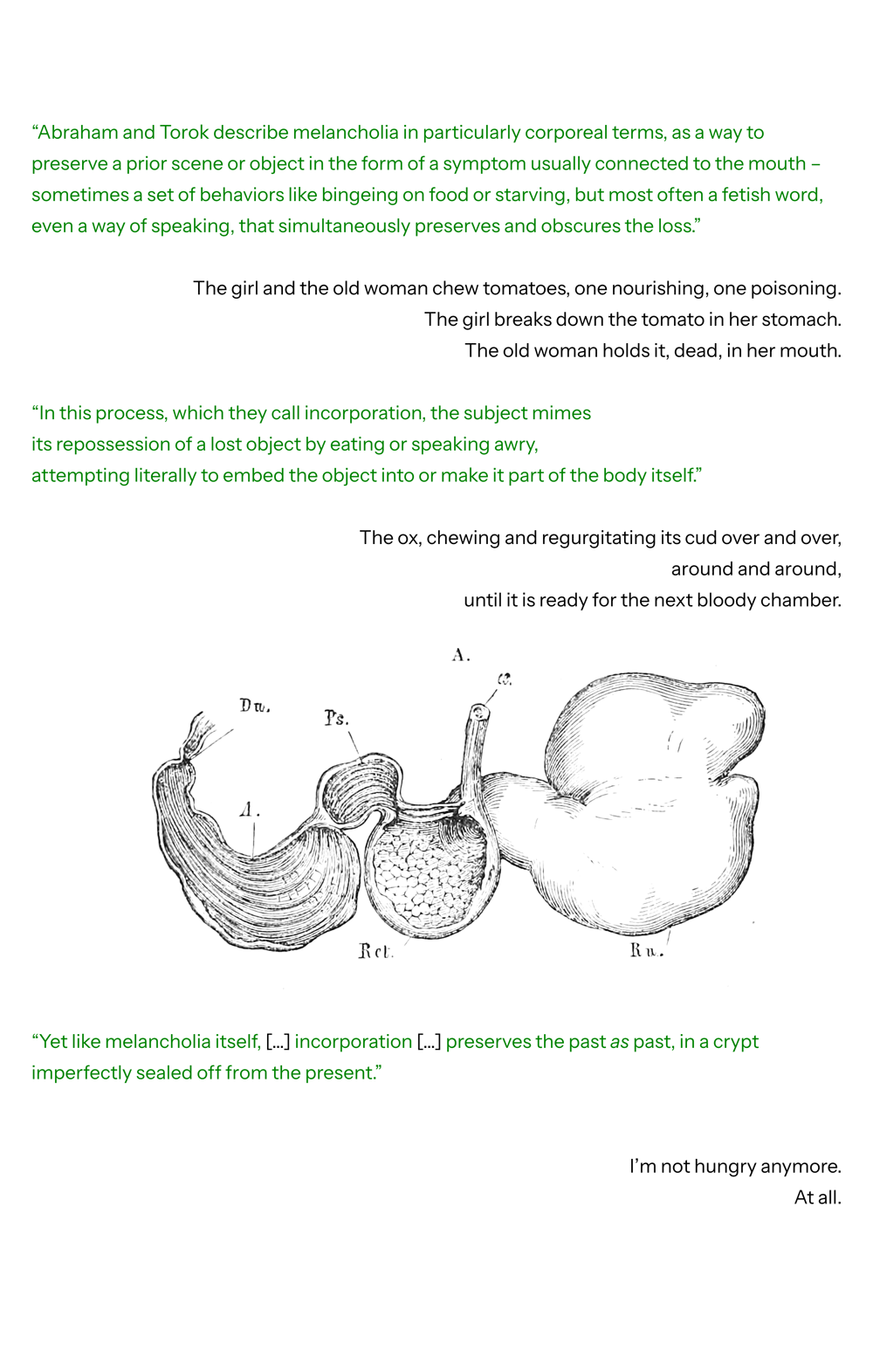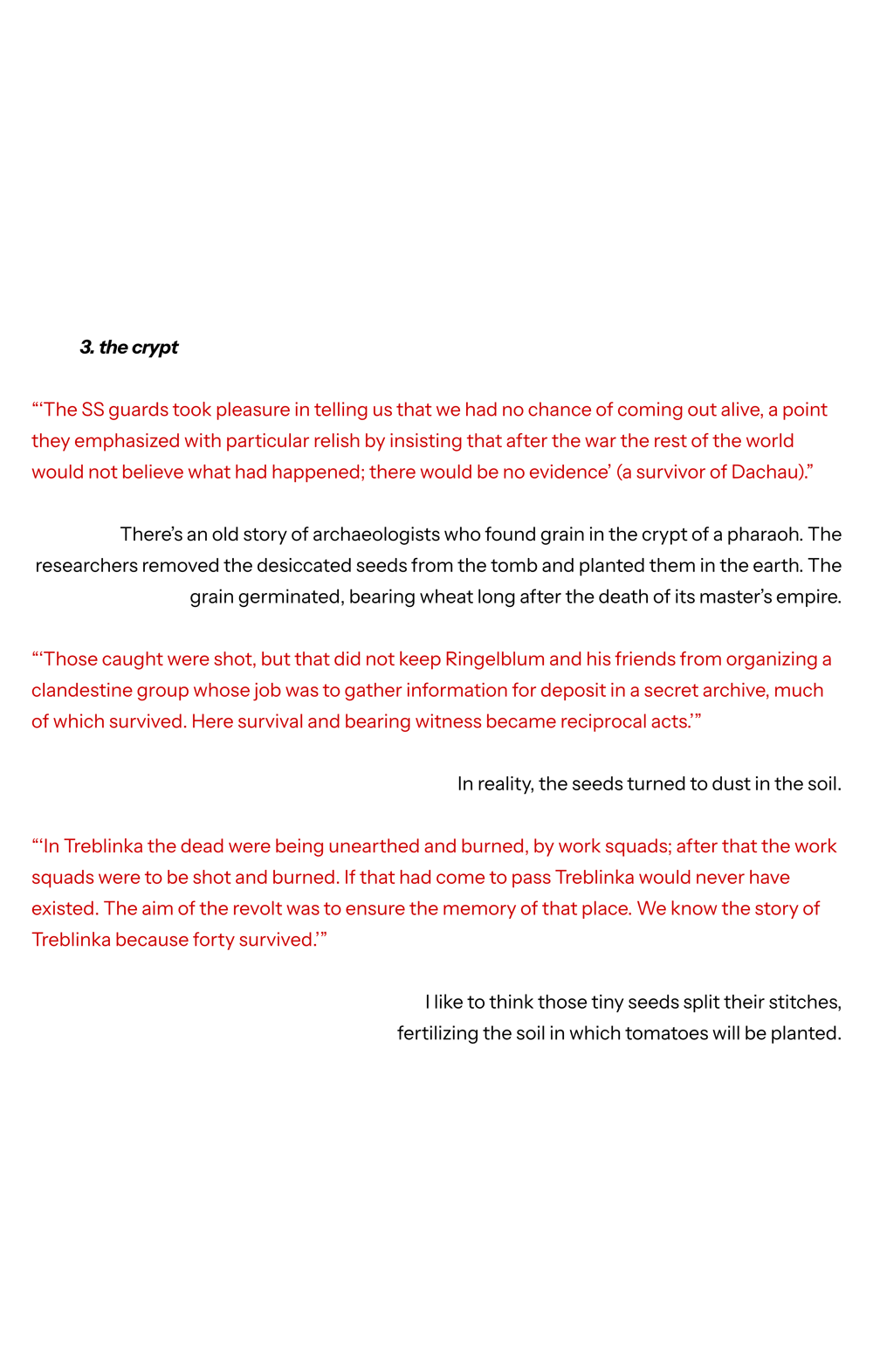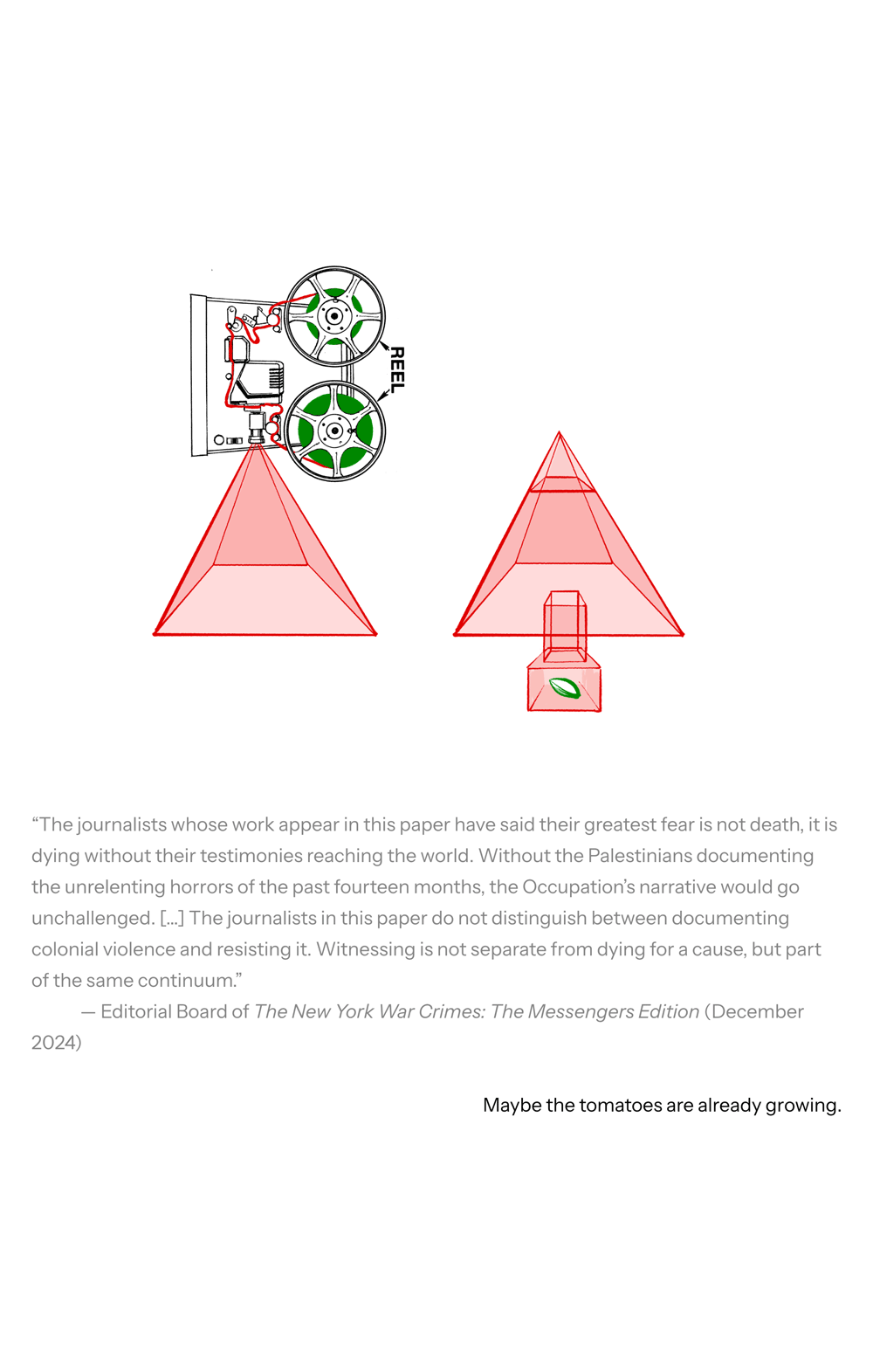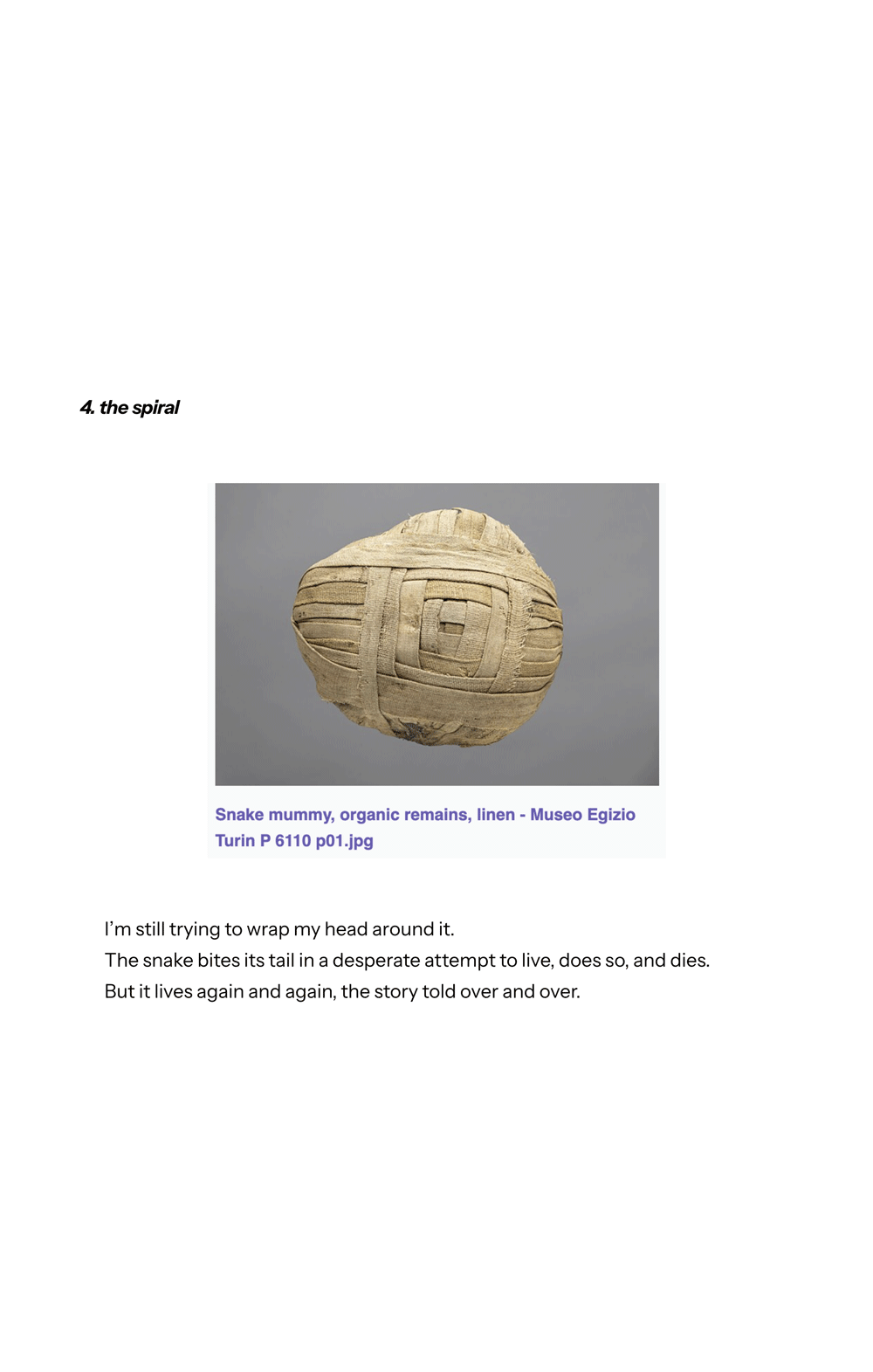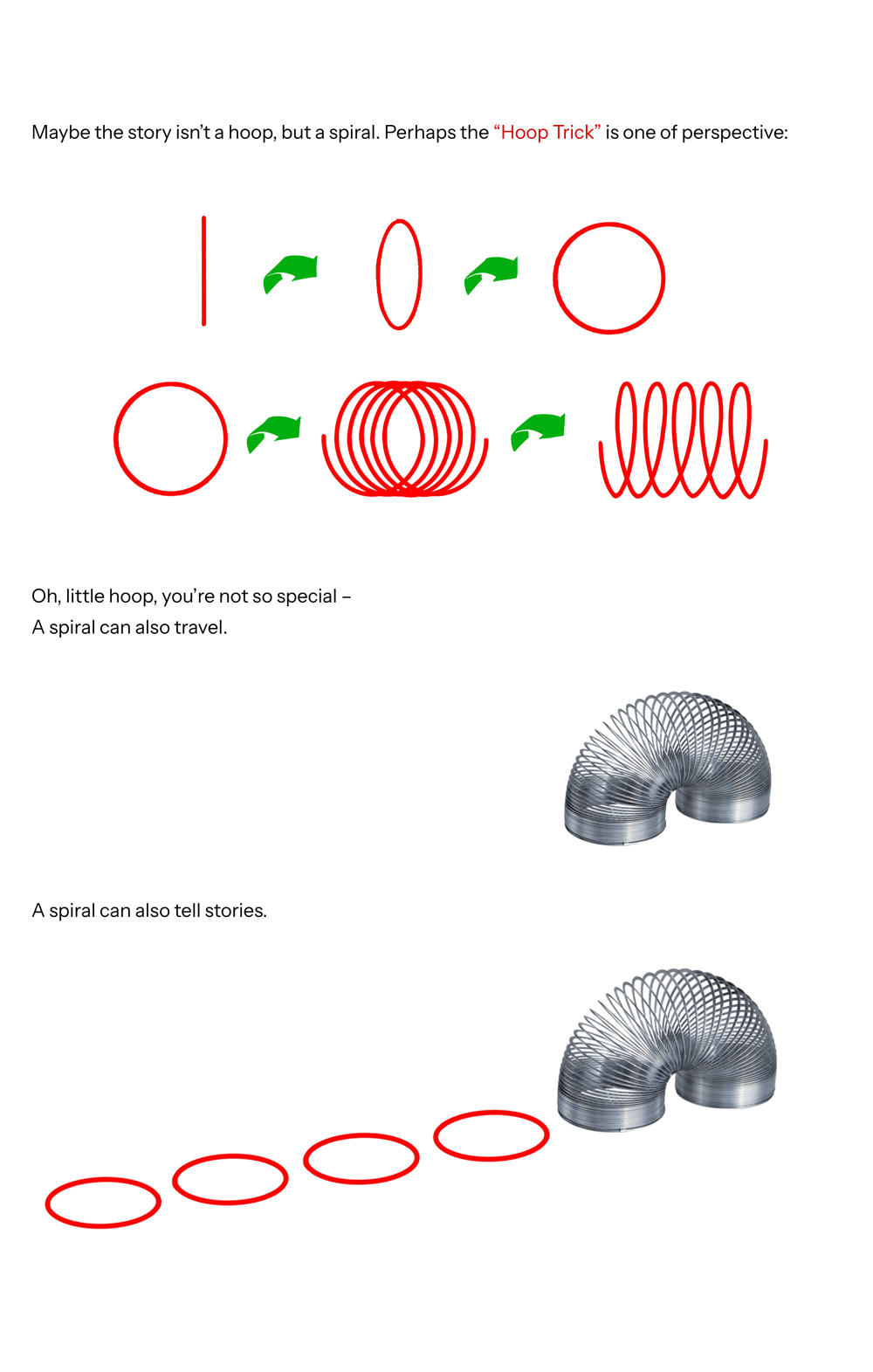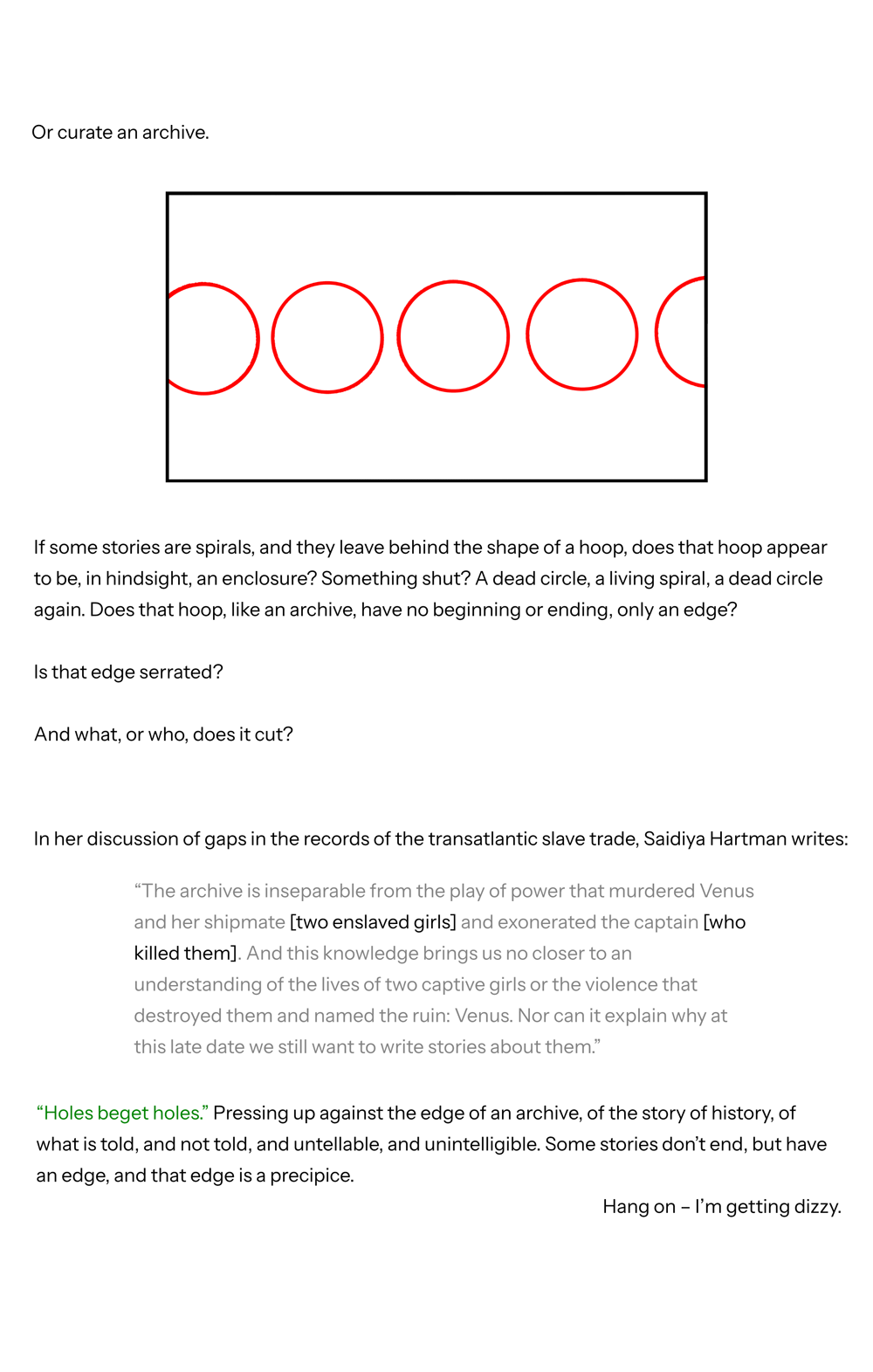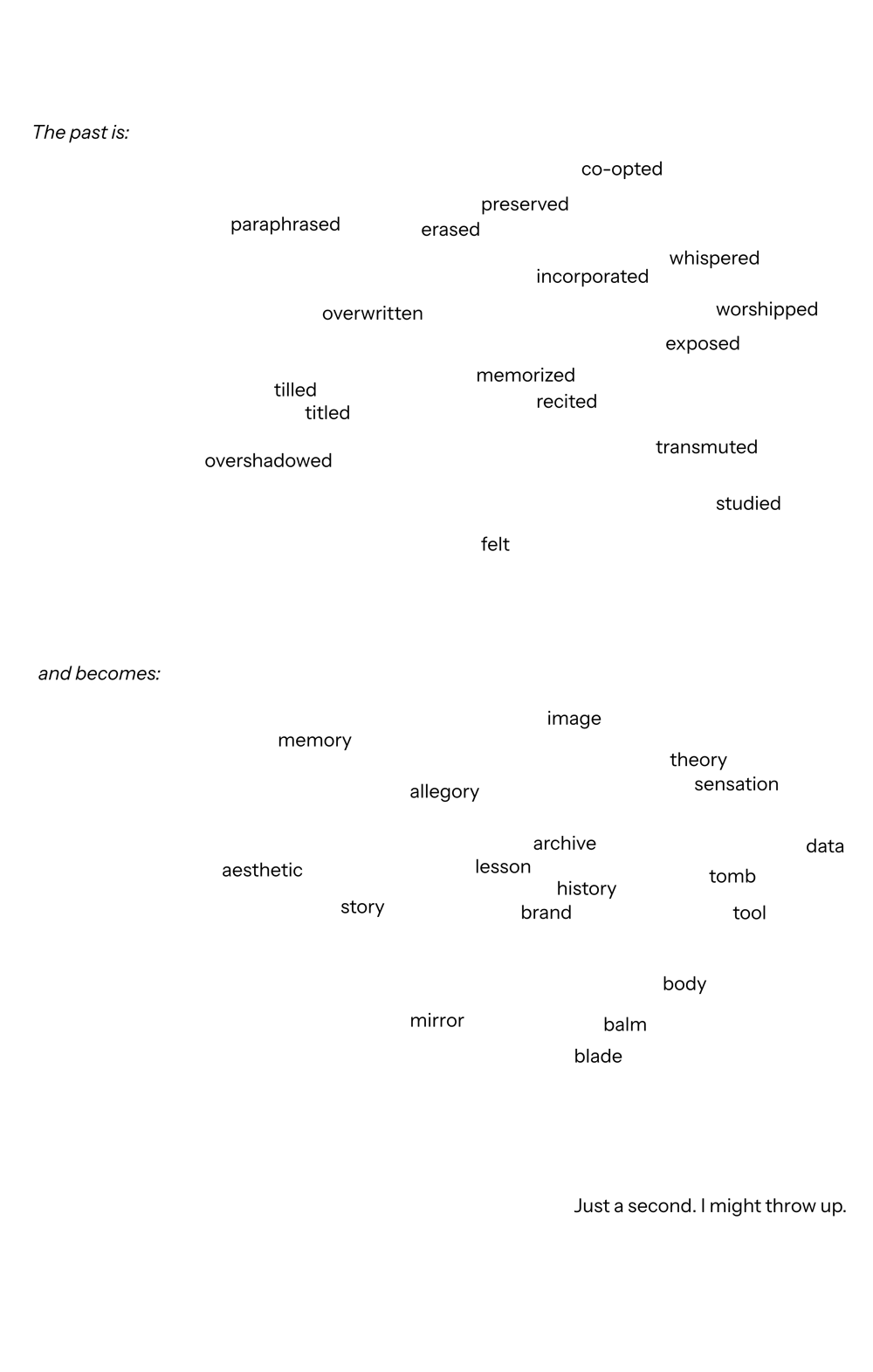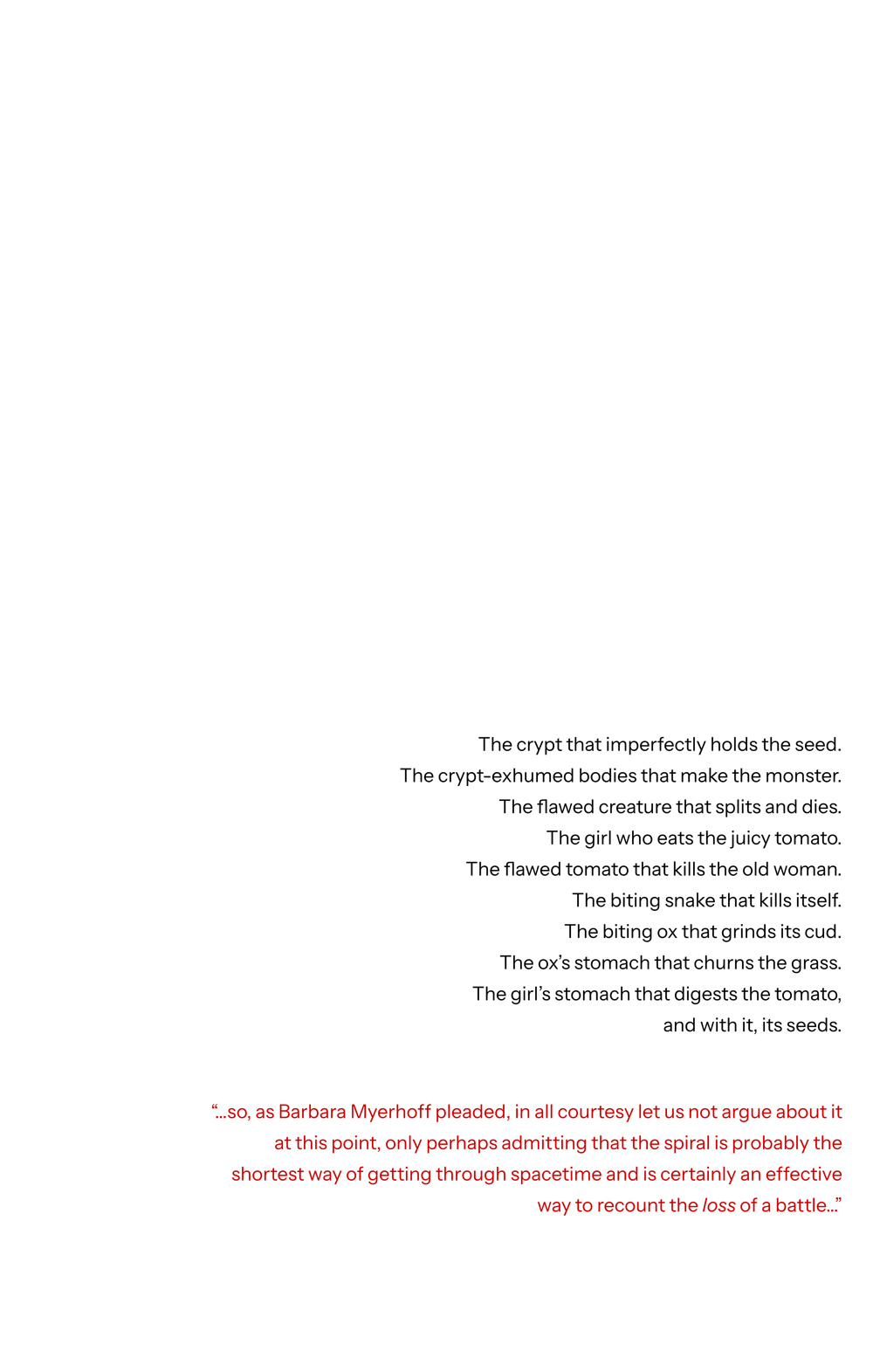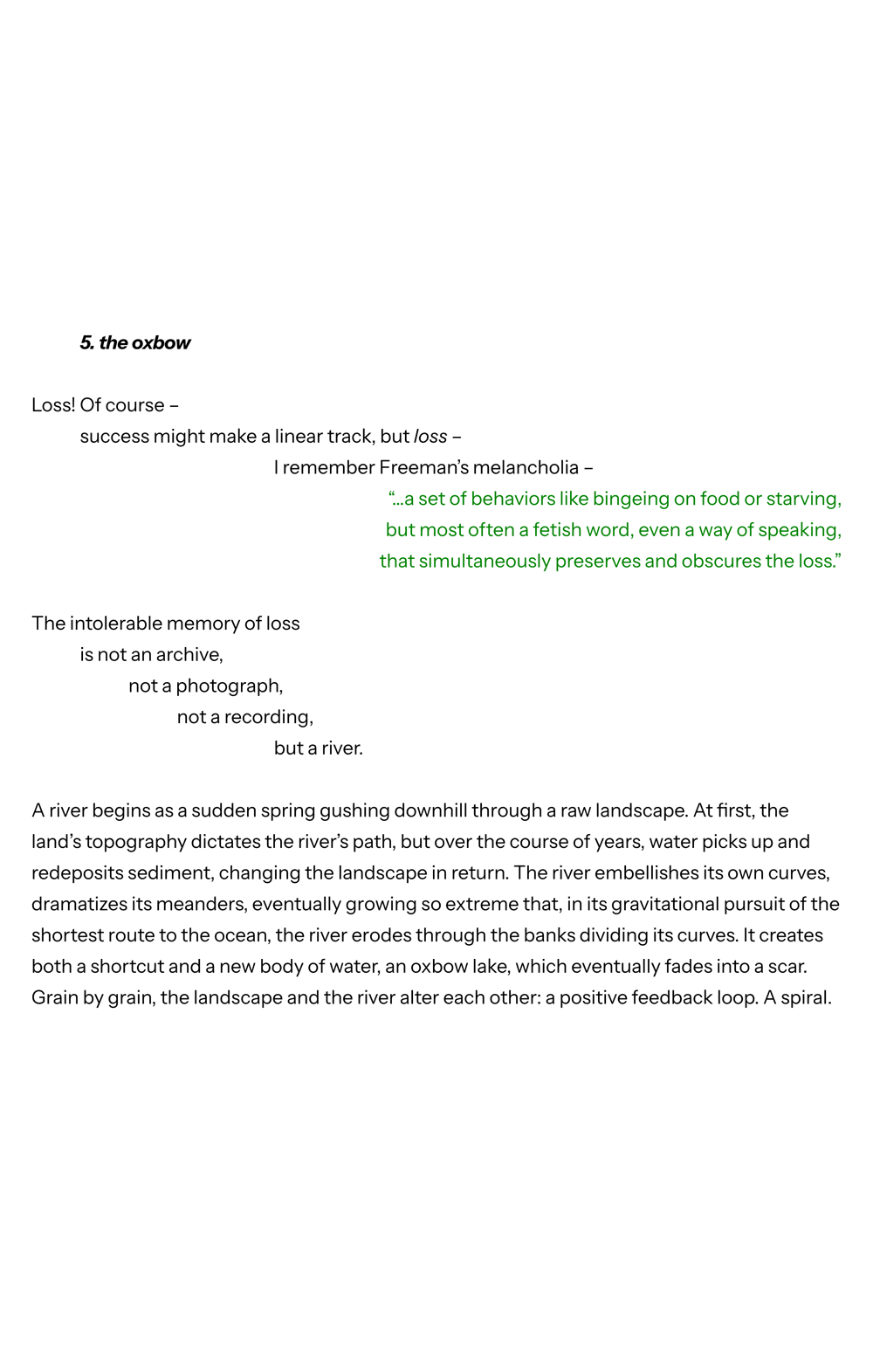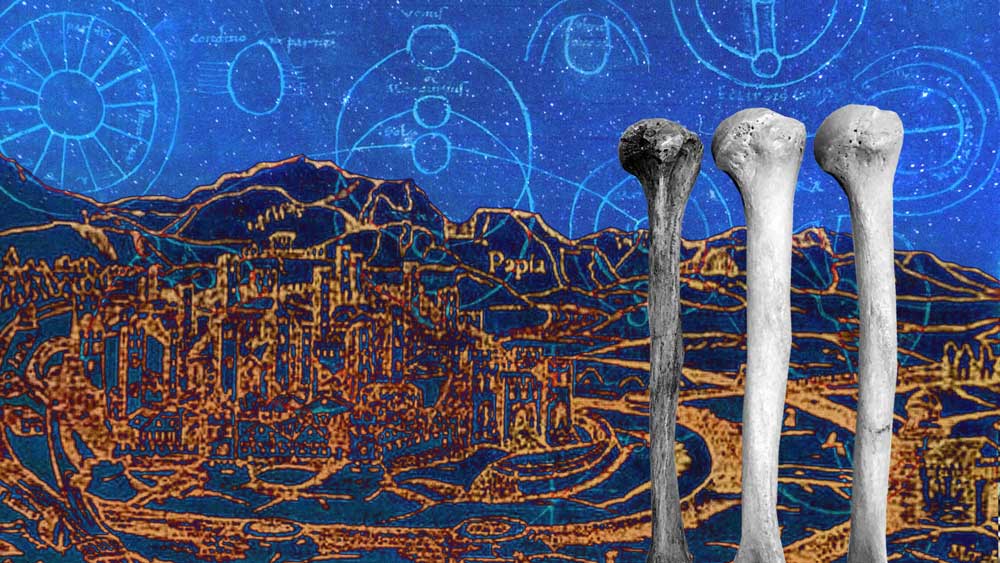Notes
Page 1
- It Was a Dark and Stormy Night; or, Why Are We Huddling about the Campfire? was written by Ursula K. Le Guin and published in 1980 in the journal Critical Inquiry by The University of Chicago Press.
- Time Binds, or, Erotohistoriography was written by Elizabeth Freeman and published in 2005 in the journal Social Text by Duke University Press.
Page 2
- The featured photo was taken in 1933 by H. Armstrong Roberts. Accessed via Wikimedia Commons.
Page 3
- “Actions that prevent their dissolution into their surroundings.” Here, Le Guin quotes neurophysiologist John Zachary Young via Terrence Des Pres’ The Survivor: An Anatomy of Life in the Death Camps published in 1976 by Oxford University Press.
- The line art of a film projector is from the archives of Pearson Scott Foresman, released to the public domain via Wikimedia Commons.
Page 4
- The cross-section of a human stomach was illustrated by Henry Vandyke Carter in 1918 for the twentieth edition of Gray’s Anatomy. Accessed via Wikimedia Commons.
Page 6
- Freeman references Nicolas Abraham and Maria Torok’s chapter Mourning or Melancholia: Introjection versus Incorporation in their book “The Shell and the Kernel: Renewals of Psychoanalysis,” published in 1994 by University of Chicago Press, edited and translated by Nicholas Rand.
- The engraving of an ox’s digestive system is from A Text-Book of Comparative Physiology for Students and Practitioners of Comparative (Veterinary) Medicine by Wesley Mills, published in 1890 by D. Appleton and Company.
Page 7
- In these three segments, Le Guin again quotes The Survivor: An Anatomy of Life in the Death Camps by Holocaust scholar Terrence Des Pres, published in 1976 by Oxford University Press. In the first segment, Des Pres quotes an unnamed survivor of the Dachau concentration camp.
- “In reality, the seeds turned to dust in the soil” refers to the research of E.A. Wallis Budge, a British Museum Egyptologist who worked to debunk the myth of “mummy wheat,” as recounted in Esoteric Egyptology, Seed Science and the Myth of Mummy Wheat by Gabriel Moshenska, published in 2017 by Open Library of the Humanities.
Page 8
- This quote is specifically from the “Note from the Editors” in Volume III, Number 15 of The New York War Crimes, published in 2024 by Writers Against the War On Gaza (WAWOG).
Page 9
- The featured screencap contains an image of an ancient Egyptian snake mummy (originating from between 722 and 332 BCE) currently held by the Museo Egizio. The enclosed caption is from Wikimedia Commons.
Page 10
- The image of the Slinky was sourced from Design Classic: The Slinky Toy by Katy Fallon, published in 2017 by the Financial Times.
Page 11
- Specifically, this Saidiya Hartman quote is from Venus in Two Acts, published in 2008 in the journal Small Axe by Duke University Press.
Page 15
- The diagram demonstrating the formation of an oxbow lake was made by Phil Reiker for the National Parks Service Geologic Resources Division, uploaded and released to the public domain in 2016 via Flickr. The author has edited the image for clarity.
Page 16
- The engraving of oxen is from The Pictorial Edition of the Works of Shakspere (sic) published in 1867-76 by Virtue and Company.
